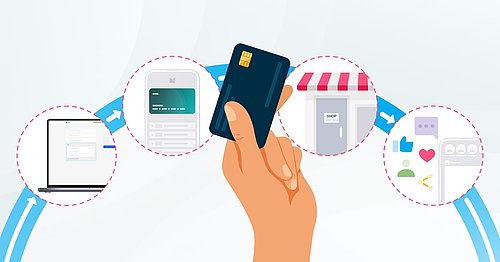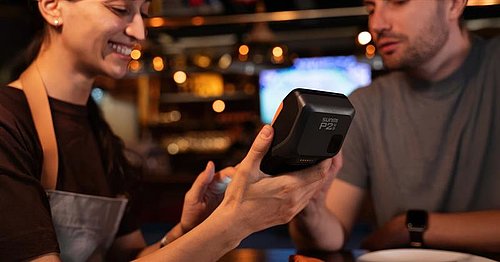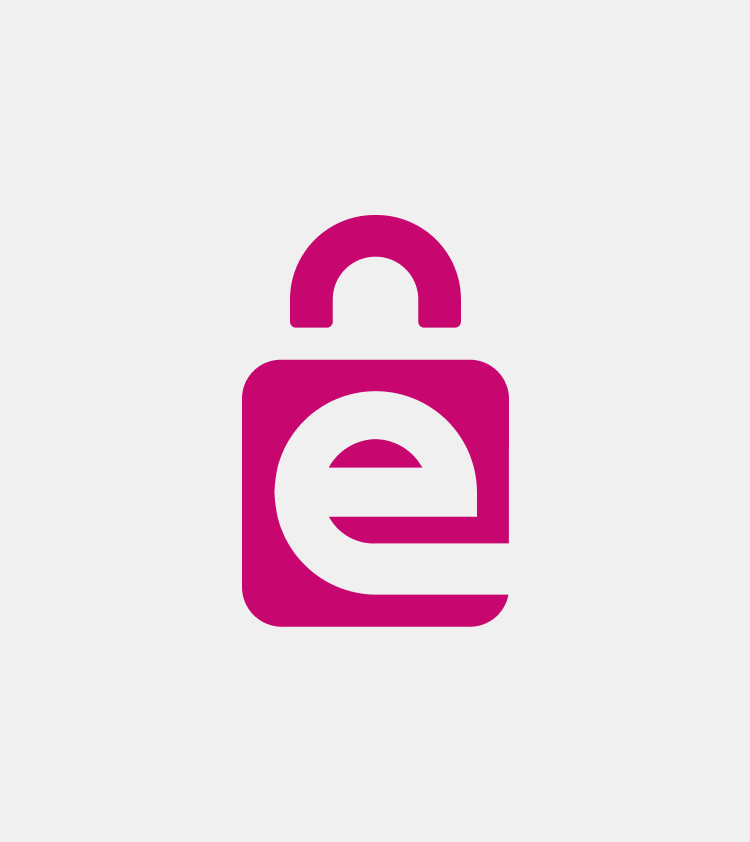Payments in Pharma: Strategies for online and in-store
This applies equally to e-commerce and physical points of sales.
What’s more, a pharmacy’s customer base is among the most diverse: it includes young, tech-savvy users as well as older individuals who may not be familiar with digital tools. That’s why payment journeys must be simple, inclusive, and intuitive, supporting smooth and trusted experiences for everyone.
In this article, we explore the key payment best practices for pharmacies, drawn from our experience working alongside merchants in the industry. You'll discover the essential components for creating a performant and user-friendly online checkout, as well as the requirements for an efficient in-store POS payment system.
Let’s dive in!
Pharma E-commerce: Building trust through the payment experience
A checkout designed for everyone
Checkout is one of the most sensitive stages in the online purchasing journey. In pharmaceuticals—where urgency and health-related concerns often drive purchases—an unclear or fragmented checkout process can result in abandonment and customer frustration.
A checkout experience fully embedded within the pharmacy’s website ensures a smoother and more reassuring payment flow, allowing customers to complete their purchase without being redirected to unfamiliar external pages or platforms. Our embedded checkout, for instance, provides exactly that—delivering a frictionless experience that even the least tech-savvy users can navigate. It also maintains visual consistency with the pharmacy brand, further reinforcing trust at a crucial moment.
Another element that companies can no longer afford to overlook—especially those operating in the pharmaceutical sector—is accessibility. While this has always been a relevant issue, it has become particularly urgent in recent months with the introduction of the European Accessibility Act. This directive sets clear guidelines to ensure that all digital services are accessible to people with disabilities.
Among the many requirements introduced are those concerning the accessibility of the checkout page and, more broadly, the usability of navigation across the entire website. This includes product pages—whose clarity should never be underestimated, especially when dealing with items related to wellness and health, where precise information and intuitive design are essential.
To further enhance the digital service, consider integrating support tools like chatbots or live assistance during checkout. These can offer crucial help to less digital-savvy customers, ensuring they complete their purchase confidently and independently.

The right mix of payment methods
Offering a balanced range of payment methods means meeting your customers’ real-world needs. So what are the must-have solutions for an online pharmacy checkout?
Cards
Credit and debit cards remain the preferred payment method across many European markets, especially among more traditional demographics.
To encourage card usage while maintaining high security, MultiSafepay offers tokenization—a robust feature that stores customer payment details as alphanumeric tokens, protecting them from unauthorized access.
Card tokenization can be implemented in two main ways:
PSP tokenization, where the payment service provider (like MultiSafepay) stores and manages the tokens.
Network tokenization, an increasingly adopted method where the card networks (e.g., Visa, Mastercard) issue and manage the tokens. These are automatically updated if the underlying card details change, improving both security and authorization rates.
Tokenization plays a key role in enabling recurring payments, supporting both:
Merchant-initiated transactions (with customer consent)
Customer-initiated transactions, where returning customers can complete their purchase instantly by selecting their saved token, with payment details auto-filled.
As an acquirer and processor for the major credit card schemes, MultiSafepay optimizes 3D Secure flows, based on historical data, risk assessments, regulatory requirements, network behavior and more, to reduce friction and optimize conversion rates - while maintaining a healthy balance in liabilities.
One Italian pharmacy, Farmacia Europea, saw a 20% increase in successful card payments thanks to this approach.
Digital Wallets
Among mobile-first users— digital wallets offer a fast, secure, and convenient checkout experience.
Like cards, their use of tokenization supports repeat purchases—ideal for customers who buy long-term supplements or recurring-use items.Bank (account) based methods
These payment solutions are particularly popular in countries like the Netherlands (iDEAL), Italy (MyBank), and Germany (Sofort/Klarna). They offer ease of use, trust, and a seamless experience, since the transaction takes place entirely within the customer’s own banking environment.
Payment Links for phone purchases
Payment links are another valuable tool for supporting pharmaceutical e-commerce, especially for handling phone orders —whether B2C or B2B— or less digital customers.
Sent via SMS, email, or WhatsApp, these links guide users step-by-step through the payment process, making it easy and intuitive.
They also help reduce cart abandonment and boost conversion rates. Farmacia Bolli 1883 used payment links with Second Chance emails to recover 34% of abandoned carts.
In-store payments: Efficiency, security, and integration
In-person interactions still defines the pharmacy experience. Fast, secure in-store payments preserve trust and keep queues moving.
Let’s explore what makes for an effective in-store payment system in a pharmacy.
Speed and efficiency
Speed is undoubtedly a key feature of an effective POS system. In pharmacies, transactions must be processed quickly—especially during peak hours—to prevent queues and ensure a smooth customer experience. In this context, handheld terminals can be invaluable, allowing staff to assist customers directly at the counter or throughout the store, and to print receipts on the spot.
Our P3H SmartPOS does it all: fast processing, barcode scanning, receipt printing - streamlining the staff’s work and keeping customer experience smooth, even at peak times.
Security and data protection
Given the sensitive nature of data handled in pharmacies—from health cards to prescriptions—data protection is both a regulatory requirement and an ethical imperative.
To ensure robust in-store security, pharmacies should:
Use terminals with anti-skimming features to prevent card cloning
Keep POS software up to date to guard against vulnerabilities
Limit terminal access to authorized staff only
Connect devices to secure, encrypted networks with real-time monitoring for suspicious activity.
Reliable connectivity
Connectivity is critical in retail—and even more so in pharmacies, where any disruption can create serious consequences. POS terminals should support multiple connection modes, such as 4G, WiFi, and Bluetooth, to ensure uninterrupted service during network outages.
Broad acceptance of payment methods
To serve a diverse clientele, in-store POS systems should support:
All major credit and debit cards
Digital wallet payments
Multiple payment types: NFC contactless, chip, magnetic stripe, and QR codes
Integration with health and loyalty cards.
Integration with the management system
A POS terminal can serve as much more than just a payment tool. Beyond streamlining sales and transaction processes, the most advanced devices can integrate seamlessly with the pharmacy’s management system, significantly simplifying daily operations like reporting and reconciliation. In the same way, effective integration with management software allows for accurate inventory tracking, helping to ensure product availability and maintain efficient stock control.

Omnichannel: A winning strategy for Pharmacies
Best practices in pharma payments must also consider the growing importance of omnichannel strategies.
Pharmacies that operate both online and in-store benefit immensely from connected, consistent customer experiences and streamlined internal workflows. Here are the key advantages:
Enhanced customer journey
For pharmacy customers and their families, convenience, reliability, and flexibility are essential.
Purchasing models like BOPIS (Buy Online, Pick Up In Store) help meet these expectations by allowing customers to choose when and where to collect their orders. Moreover, this hybrid approach combines the speed and ease of online purchasing with the trusted, personal feel of an in-store experience.
From the consumer’s perspective, an omnichannel journey brings the same sense of dependability typically associated with traditional pharmacies into the digital world—an essential factor in a sector where timing and product availability are often critical.
By creating a more solid and coherent customer journey—one that strengthens user trust and ensures consistent shopping experiences across all touchpoints—an omnichannel strategy helps enhance both sales performance and service quality.
Deeper knowledge of the customer
Omnichannel enables the pharmacist to gain a deeper understanding of their customers and to better preserve the “memory” of their purchases. Think, for example, of how often a customer enters the pharmacy needing a product but cannot remember its name. Thanks to the omnichannel approach—which unifies all user data and purchase history regardless of whether the sale took place online or in-store—the pharmacist can access a complete view of that customer's behavior. If the user has bought the product before, the pharmacist can easily help them identify it.
Properly profiling customers also offers additional advantages: it allows pharmacists to send personalized promotions, enhance service quality, and increase customer loyalty.
A complete view of the business
In addition to enabling more accurate customer profiling, the synchronization and integration of sales channels provide pharmacy managers with a comprehensive overview of business performance. They can monitor both online and offline sales in real time, optimize budget allocation by identifying which product lines and brands perform best, and make more informed decisions on aspects such as inventory management, pricing strategies, and marketing activities.
Optimizing internal operations
On an operational level, omnichannel positively impacts many other areas of the business. The resulting integration simplifies and streamlines internal processes that are often complex and error-prone, such as refunds, returns, and payment reconciliation. This not only frees up staff time but also improves overall efficiency, resulting in faster and more responsive customer service.
Furthermore, inventory synchronization helps prevent overstocking and shortages, improving product availability and ensuring a more reliable purchase experience for customers.
What this means for your pharmacy
The pharmaceutical industry is one of the most sensitive areas of retail. It’s not just about selling a product—it’s about meeting critical health needs quickly and with trust. The broad demographic served by pharmacies demands inclusive, secure, and user-friendly payment solutions—both online and in-store.
MultiSafepay has been supporting pharmacies with reliable, and tailored payment solutions that meet the specific needs of their customers. We've helped businesses like Farmacia Bolli 1883 embrace digital transformation and harness the benefits of e-commerce.
If you're looking to earn your customers' trust and deliver seamless, efficient shopping experiences, you’ve found the right payment partner. Contact our Sales Team today to learn how we can help you optimize your pharmacy’s payment system.



